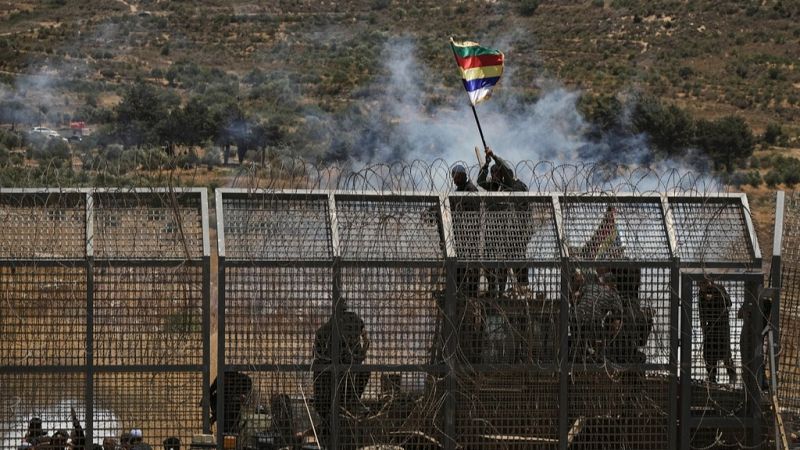Escalation of Conflict in Southern Syria
Syrian government forces have been deployed again to southern Syria, despite earlier withdrawal under a ceasefire agreement. This move comes after renewed clashes erupted overnight on Friday between Druze armed groups and members of Bedouin clans, according to officials. The situation has raised concerns about the stability of the region, which is home to a significant Druze population.
Government Forces Re-enter the Area
According to two Syrian officials who spoke on condition of anonymity, government security forces have agreed with some Druze factions to re-enter the area. Their goal is to restore stability and protect state institutions. The decision highlights the fragile nature of the current political landscape in the region.
The Syrian military had previously pulled out of the Druze-majority province of Suwayda following days of intense clashes with militias linked to the Druze community. These conflicts threatened to destabilize the country’s post-war transition. The fighting eventually led to airstrikes by Israel against Syrian forces, as the Jewish state sought to defend the Druze minority.
Ceasefire and Truce
A truce was announced on Wednesday, mediated by the US, Turkey, and Arab countries. Under this agreement, Druze factions and clerics were given the responsibility of maintaining internal security in Suwayda. Syria’s interim President Ahmad al-Sharaa emphasized that the Druze would be left to manage their own affairs.
The initial clashes began between Druze militias and local Sunni Muslim Bedouin tribes on Sunday. Government forces intervened, taking the side of the Bedouins against the Druze. The conflict resulted in hundreds of deaths over four days, with allegations that government-affiliated fighters executed Druze civilians and looted and burned homes.
Israeli Involvement
Israel’s involvement escalated significantly when it launched dozens of airstrikes on convoys of government fighters. The attacks also targeted the Syrian Defence Ministry headquarters in central Damascus. This marked a major shift in Israel’s approach to the conflict, as it sought to protect its interests in the region.
The Druze community in Israel is considered loyal and often serves in the Israeli military. This connection adds another layer of complexity to the ongoing tensions in southern Syria.
Resumption of Clashes
After the ceasefire and withdrawal of government forces, clashes once again flared between the Druze and Bedouin groups in parts of Suwayda province. State media reported that Druze militias carried out revenge attacks against Bedouin communities, leading to a wave of displacement.
This resurgence of violence underscores the challenges of maintaining peace in the region. The fragile truce remains under threat, with both sides showing little willingness to compromise.
Background on the Druze Community
The Druze religious group originated as a 10th-century offshoot of Ismailism, a branch of Shiite Islam. However, the Druze do not consider themselves to be Muslim. They have a distinct identity and practices that set them apart from other religious groups.
More than half of the roughly 1 million Druze worldwide live in Syria. Most of the remaining Druze population resides in Lebanon and Israel, including in the Golan Heights, which Israel captured from Syria during the 1967 Mideast War and annexed in 1981.
The Druze community continues to play a significant role in the political and social dynamics of the region. Their unique position and historical ties to both Syria and Israel make them a key player in the ongoing conflicts and negotiations in southern Syria.







